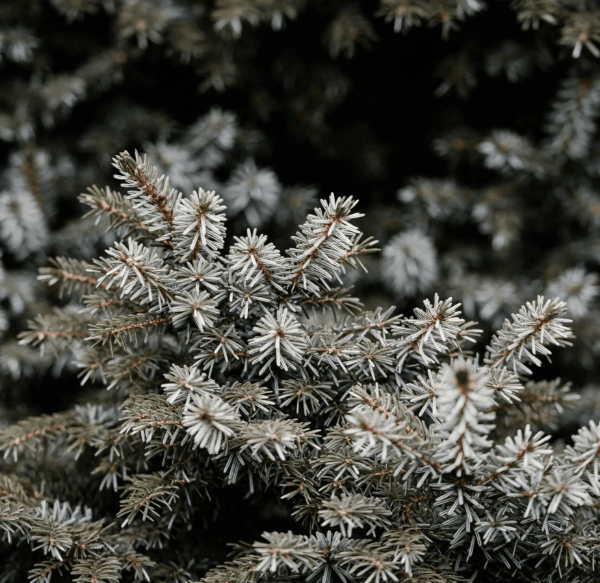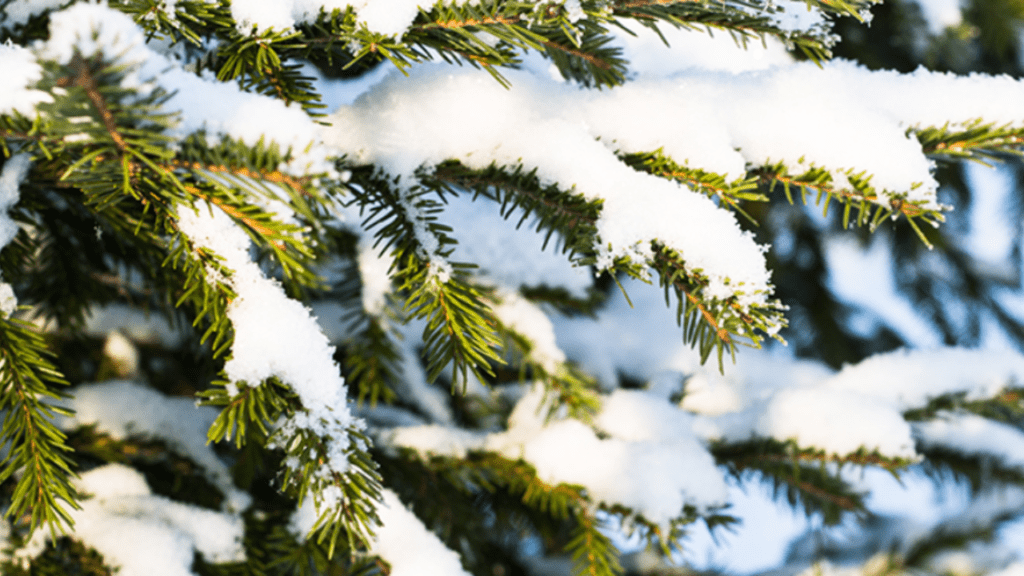
Top Winter Evergreen Trees to Enhance Your Landscape Year-Round
Evergreen trees are an essential component of winter landscapes, adding color and texture to an otherwise bleak and barren environment. These trees provide year-round interest and structure to your garden, making them a valuable addition to any landscape. Not only do evergreen trees enhance the visual appeal of your outdoor space, but they also serve as important habitat for wildlife and offer much-needed privacy and wind protection. Some popular winter evergreen trees to consider for your garden include the Eastern Red Cedar, the Colorado Blue Spruce, and the Norway Spruce. These trees not only provide beauty and structure to your landscape during the winter months, but they also offer a variety of practical benefits. When caring for evergreen trees in the winter, it’s important to water them regularly, especially during dry winter months, and to protect them from heavy snow and ice by shaking off any accumulation. By incorporating evergreen trees into your landscape, you can create a beautiful and vibrant outdoor space that will thrive even in the winter.
Table of Contents
ToggleWhy Choose Winter Evergreen Trees?
Winter evergreen trees are a great choice for your landscape because they provide year-round color and texture, even in the cold and snowy winter months. They offer visual interest and structure to your garden, making them a valuable addition to any landscape. In addition to their aesthetic appeal, evergreen trees also serve as important habitat for wildlife, offer privacy, and provide wind protection. Some popular winter evergreen trees to consider for your garden include the Eastern Red Cedar, the Colorado Blue Spruce, and the Norway Spruce. These trees not only provide beauty and structure to your landscape during the winter months, but they also offer a variety of practical benefits. When caring for evergreen trees in the winter, it’s important to water them regularly, especially during dry winter months, and to protect them from heavy snow and ice by shaking off any accumulation. By incorporating evergreen trees into your landscape, you can create a beautiful and vibrant outdoor space that will thrive even in the winter.
Benefits of evergreen trees in winter.
Evergreen trees are a great addition to your landscape in the winter months. They provide year-round color and texture, even when other plants are dormant. They offer visual interest and structure to your garden, making them a valuable addition to any landscape. In addition to their aesthetic appeal, evergreen trees also serve as important habitat for wildlife, offer privacy, and provide wind protection. Some popular winter evergreen trees to consider for your garden include the Eastern Red Cedar, the Colorado Blue Spruce, and the Norway Spruce. These trees not only provide beauty and structure to your landscape during the winter months, but they also offer a variety of practical benefits. When caring for evergreen trees in the winter, it’s important to water them regularly, especially during dry winter months, and to protect them from heavy snow and ice by shaking off any accumulation. By incorporating evergreen trees into your landscape, you can create a beautiful and vibrant outdoor space that will thrive even in the winter.
Environmental advantages (e.g., windbreaks, wildlife habitat).
Evergreen trees offer a multitude of environmental advantages, making them a valuable addition to any landscape. They provide important windbreaks, helping to protect against strong winds and storms. This can be especially beneficial for surrounding plants, as well as for your home and any outdoor structures. Evergreen trees also provide vital habitat for wildlife, offering shelter and food sources for birds and other animals, contributing to biodiversity in your area. Additionally, their dense foliage can offer privacy and noise reduction, creating a peaceful and secluded atmosphere in your outdoor space. By planting evergreen trees, you can not only enhance the beauty of your landscape but also contribute to the overall health and sustainability of the environment.
Aesthetic appeal throughout the year.
Evergreen trees provide aesthetic appeal throughout the year. Their lush, green foliage remains vibrant and beautiful even in the winter months, adding color and texture to your landscape when other plants may be dormant. By incorporating evergreen trees into your outdoor space, you can create a visually appealing environment that remains attractive and lively all year round. Additionally, the variety of shapes and sizes of evergreen trees allows for endless possibilities in designing a visually stunning landscape. Whether you are looking for a tall and majestic tree or a compact and sculptural one, evergreens offer a wide range of options to enhance the aesthetic appeal of your outdoor space. Overall, evergreen trees are a valuable addition to any landscape, providing year-round beauty and enhancing the overall visual appeal of your outdoor environment.
Types of Winter Evergreen Trees
Overview of different types of evergreen trees that thrive in winter.
Evergreen trees are a great addition to any landscape, especially in the winter. They provide year-round aesthetic appeal with their lush, green foliage that remains vibrant even in the colder months. There are many different types of evergreen trees that thrive in the winter, such as pine, spruce, fir, and cedar trees. These trees not only add beauty to your outdoor space but also contribute to the health and sustainability of the environment. Their dense foliage can also offer privacy and noise reduction, creating a peaceful and secluded atmosphere in your outdoor space. By planting evergreen trees, you can create a visually stunning landscape that remains attractive and lively throughout the year.
Subsections for each type, including key characteristics, growth habits, and ideal conditions:
Conifers
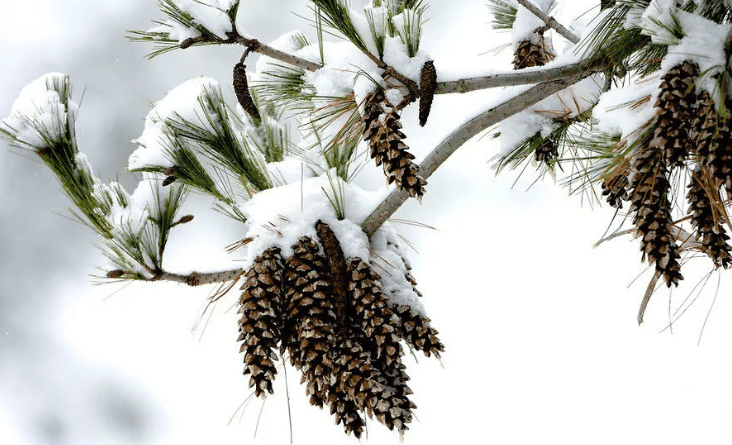
, including pine, spruce, fir, and cedar trees, are a popular choice for winter evergreen trees. They are known for their needle-like leaves and cone-bearing capabilities. Conifers are typically slow-growing and can reach impressive heights, making them ideal for creating a focal point in your landscape. They are also low-maintenance and can thrive in a variety of soil conditions and climates. Their year-round greenery and attractive cones add visual interest to your outdoor space, especially during the winter months when other trees may have lost their leaves. With their unique textures and colors, conifers can add depth and dimension to your landscape, creating a peaceful and natural environment. When planting conifers, it is important to consider their specific growth habits and ideal conditions to ensure that they thrive and enhance the overall beauty of your outdoor space.
Broadleaf Evergreens
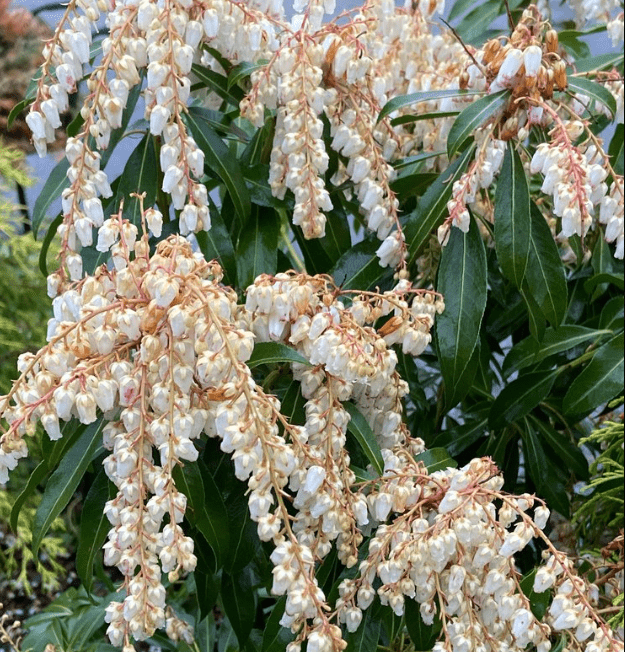
are another type of evergreen tree that can add a stunning touch to your landscape. These trees have broad, flat leaves, as opposed to the needle-like leaves of conifers. They are known for their lush and dense foliage, which can provide year-round color and texture to your outdoor space. Some common examples of broadleaf evergreens include holly, magnolia, and boxwood trees. These trees are typically low-maintenance and can thrive in a variety of soil types and climates. They also offer a range of colors and textures, making them a versatile choice for creating visual interest in your landscape. Whether you want to create a formal hedge or a natural woodland setting, broadleaf evergreens can help you achieve the look you desire. When planting broadleaf evergreens, it’s important to consider their specific growth habits and ideal conditions to ensure that they thrive and enhance the overall beauty of your outdoor space.
Shrubs
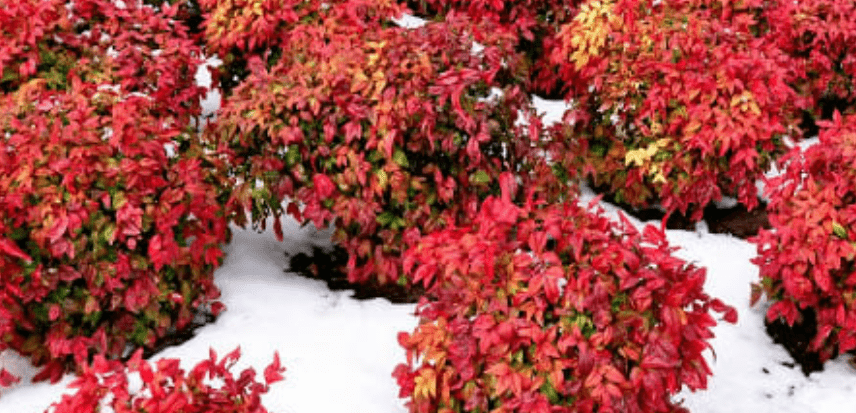
are a great addition to any outdoor space. They come in a variety of shapes, sizes, and colors, making them a versatile choice for landscaping. Shrubs can provide year-round interest with their foliage, flowers, and berries. They can also be used as hedges, borders, or focal points in your garden.
When choosing shrubs for your landscape, it’s important to consider their mature size, growth habits, and ideal growing conditions. Some shrubs prefer full sun, while others thrive in shaded areas. It’s also important to consider the soil type and moisture levels in your garden to ensure that the shrubs you choose will thrive.
Proper planting and care are essential for the health and longevity of shrubs. When planting shrubs, make sure to dig a hole that is twice as wide as the root ball and at the same depth. Backfill the hole with soil and water thoroughly to help the shrub establish its roots. Pruning and fertilizing are also important for the maintenance of shrubs. Regular pruning can help control the size and shape of the shrub and promote healthy growth.
Overall, shrubs can add beauty, structure, and diversity to your landscape. With proper care and attention, they can thrive and enhance the overall aesthetic of your outdoor space.
Top Winter Evergreen Trees for Different Regions
Recommendations based on various climate zones.
When choosing evergreen trees for your garden, it’s important to consider the climate zone you live in. In colder regions, consider trees like the Colorado Blue Spruce and the Eastern Red Cedar, which are well suited to withstand harsh winter conditions. For milder climates, the Southern Magnolia and the Leyland Cypress are good options. If you live in a coastal area, consider trees like the Shore Pine or the Monterey Cypress, which can tolerate the salty air and wind. It’s also important to consider the soil type and moisture levels in your garden to ensure that the evergreen trees you choose will thrive. Proper planting and care are essential for the health and longevity of evergreen trees. When planting, make sure to dig a hole that is twice as wide as the root ball and at the same depth. Backfill the hole with soil and water thoroughly to help the tree establish its roots. Regular pruning and fertilizing are also important for the maintenance of evergreen trees. Overall, evergreen trees can add beauty, structure, and year-round interest to your landscape. With proper care and attention, they can thrive and enhance the overall aesthetic of your outdoor space.
Cold Climates:
Examples (e.g., Blue Spruce, Norway Spruce).
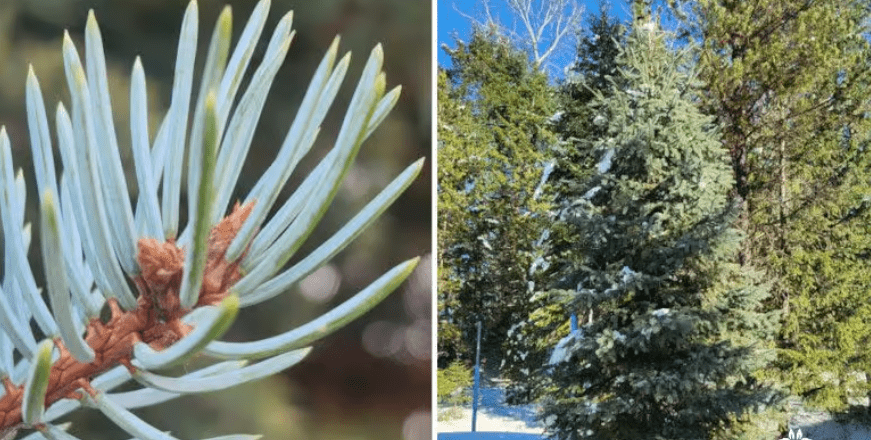
If you live in a cold climate, consider trees like the Blue Spruce or Norway Spruce. These evergreen trees are well-suited to cold temperatures and can withstand harsh winter conditions. They can also add a touch of festive greenery to your landscape during the winter months. It’s important to choose evergreen trees that are hardy and can withstand the cold temperatures in your area. Proper planting and care are essential for the health and longevity of evergreen trees in cold climates. When planting, make sure to choose a location with well-drained soil and plenty of sunlight. Water the trees regularly, especially during dry periods, and protect them from strong winds that can cause damage. With proper care and maintenance, evergreen trees can thrive in cold climates and provide year-round beauty to your outdoor space.
Mild Climates:
Examples (e.g., Southern Magnolia, Italian Cypress).

If you live in a mild climate, there are many beautiful evergreen trees to choose from that can thrive in your area. For example, the Southern Magnolia is a popular choice with its large, glossy green leaves and fragrant white flowers. Italian Cypress trees are another great option, with their tall, slender shape and elegant appearance. These trees can add a touch of Mediterranean charm to your landscape. When planting evergreen trees in mild climates, it’s important to consider their water and sunlight needs. Make sure to choose a location with well-drained soil and adequate sunlight for the best growth and health of the trees. With the right care and maintenance, these evergreen trees can enhance the beauty of your outdoor space year-round.
Dry Climates:
Examples (e.g., Arizona Cypress, Juniper).
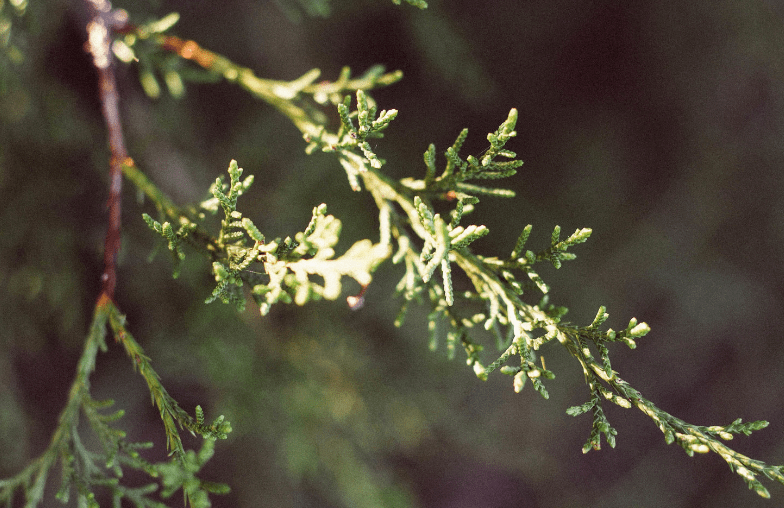
If you live in a dry climate, there are several evergreen tree options that can thrive in these conditions. Arizona Cypress is a great choice for dry climates, as it is drought-tolerant and can withstand harsh conditions. Juniper trees are also well-suited for dry climates, with their ability to thrive in low-water conditions. When choosing evergreen trees for dry climates, it’s important to consider their water needs and the soil conditions. Make sure to plant them in well-draining soil and provide them with proper watering to ensure their health and growth. With the right care and maintenance, these evergreen trees can add beauty and greenery to your outdoor space, even in dry climates.
Planting and Care Tips for Winter Evergreen Trees
Best practices for planting evergreen trees in winter.
When planting evergreen trees in winter, it’s important to choose a location with well-drained soil and adequate sunlight for the best growth and health of the trees. In dry climates, options such as Arizona Cypress and Juniper trees are great choices that can thrive in harsh conditions. Make sure to plant them in well-draining soil and provide proper watering to ensure their health and growth. With the right care and maintenance, these evergreen trees can enhance the beauty of your outdoor space year-round. Additionally, it’s important to ensure that the trees are properly watered and mulched to protect their roots from freezing temperatures. Following these best practices for planting and caring for evergreen trees in winter can help ensure their successful growth and health.
Soil preparation and fertilization.
When it comes to planting and caring for evergreen trees, soil preparation and fertilization are key factors to consider. Before planting, it’s important to prepare the soil by ensuring that it is well-drained and has the right nutrients for the trees to thrive. Adding organic matter to the soil can help improve its structure and fertility, providing a good foundation for the trees to grow. Additionally, fertilization can help provide essential nutrients for the trees’ growth and development. Choosing the right type of fertilizer and applying it at the appropriate time can support the evergreen trees’ health and promote strong, lush foliage. By paying attention to soil preparation and fertilization, you can help ensure the success of your evergreen trees and enjoy their beauty in your outdoor space for years to come.
Watering requirements during colder months.
During the colder months, evergreen trees still need to be watered, but the watering requirements may differ from the warmer months. It’s important to monitor the soil moisture and water the trees as needed, especially during dry winter periods. However, be cautious not to overwater the trees, as excessive moisture in the soil can lead to root rot. Using a moisture meter or simply checking the soil for dryness can help determine when the trees need to be watered. Additionally, applying mulch around the trees can help retain soil moisture and protect the roots from extreme temperatures. By staying attentive to the watering needs of evergreen trees during the colder months, you can help ensure their health and resilience in the winter.
Common Issues and Solutions
Identifying and treating common pests and diseases in winter evergreen trees.
Evergreen trees can be susceptible to pests and diseases during the winter months. Some common pests to watch out for include aphids, spider mites, and scale insects. These pests can cause damage to the foliage and overall health of the trees. It is important to regularly inspect the trees for any signs of pest infestation and treat them promptly with insecticidal soaps or horticultural oils. Additionally, certain diseases such as needle cast and root rot can affect evergreen trees during the winter. Proper identification and treatment of these diseases are crucial in maintaining the health of the trees. Applying fungicides and removing any infected branches can help control the spread of diseases. By being proactive in identifying and treating common pests and diseases, you can help protect the health and appearance of your winter evergreen trees.
Winter damage and how to prevent it.
During the winter months, evergreen trees can be vulnerable to pests and diseases. It’s important to keep an eye out for common pests like aphids, spider mites, and scale insects, as they can cause damage to the foliage and overall health of the trees. Regular inspections and prompt treatment with insecticidal soaps or horticultural oils can help prevent infestations from getting out of control. In addition to pests, evergreen trees can also be susceptible to diseases such as needle cast and root rot during the winter. Proper identification and treatment of these diseases is essential for maintaining the health of the trees. Applying fungicides and removing infected branches can help control the spread of diseases. By being proactive in identifying and treating common pests and diseases, you can help protect the health and appearance of your winter evergreen trees.
Pruning techniques to maintain tree health and shape.
Pruning techniques are essential for maintaining the health and shape of your trees. Proper pruning helps to remove dead or diseased branches, improve the tree’s structure, and promote healthy growth. When pruning evergreen trees in the winter, it’s important to focus on removing any damaged or weak branches that could potentially break under the weight of snow or ice. Additionally, shaping the tree through selective pruning can help improve its overall appearance and encourage new growth. Be sure to use sharp, clean pruning tools and make cuts at the right angle to prevent damage to the tree. It’s also important to avoid over-pruning, as this can weaken the tree and make it more susceptible to disease. By using proper pruning techniques, you can help maintain the health and shape of your evergreen trees for years to come.
Landscaping Ideas with Winter Evergreen Trees
Designing a winter garden with evergreen trees.
Designing a winter garden with evergreen trees can bring beauty and life to your outdoor space, even during the colder months. Evergreen trees provide year-round color and texture, making them a great addition to any landscape. When designing a winter garden with evergreen trees, consider the overall layout and placement of the trees to create a visually appealing and cohesive look. You can also incorporate other winter plants and elements, such as hardscaping features and outdoor lighting, to enhance the beauty of your garden.
In addition to aesthetics, it’s important to consider the health and maintenance of your evergreen trees. By being proactive in identifying and treating common pests and diseases, you can help protect the health and appearance of your winter evergreen trees. Proper pruning techniques are essential for maintaining the health and shape of your trees. It helps to remove dead or diseased branches, improve the tree’s structure, and promote healthy growth. When pruning evergreen trees in the winter, focus on removing any damaged or weak branches that could potentially break under the weight of snow or ice. Shaping the tree through selective pruning can improve its overall appearance and encourage new growth.
Overall, designing a winter garden with evergreen trees can create a beautiful and sustainable outdoor space. By using proper landscaping and maintenance techniques, you can enjoy the beauty of your winter garden for years to come.
evergreen trees with other winter plants for a stunning landscape.
When designing a stunning winter landscape, consider incorporating evergreen trees with other winter plants. Evergreen trees provide a beautiful backdrop and structure to your garden all year round. In addition to aesthetics, it’s important to consider the health and maintenance of your evergreen trees. By being proactive in identifying and treating common pests and diseases, you can help protect the health and appearance of your winter evergreen trees. Proper pruning techniques are essential for maintaining the health and shape of your trees. It helps to remove dead or diseased branches, improve the tree’s structure, and promote healthy growth. When pruning evergreen trees in the winter, focus on removing any damaged or weak branches that could potentially break under the weight of snow or ice. Shaping the tree through selective pruning can improve its overall appearance and encourage new growth. Overall, designing a winter garden with evergreen trees can create a beautiful and sustainable outdoor space. By using proper landscaping and maintenance techniques, you can enjoy the beauty of your winter garden for years to come.
In conclusion, adding evergreen trees to your landscape can provide year-round beauty and structure, especially during the winter months. These trees not only enhance the aesthetic appeal of your outdoor space but also provide privacy and protection from harsh winter winds. By choosing the right evergreen tree for your climate and properly caring for it, you can enjoy a stunning and resilient landscape throughout the year. Consider consulting with a landscaping professional to determine the best evergreen tree options for your specific location and needs.
Frequently asked questions And Answer
Some top evergreen trees for winter landscapes include the Colorado Blue Spruce, the Eastern Red Cedar, the Norway Spruce, and the American Holly.
Evergreen trees provide color and texture to the landscape, even in the winter months when other trees have lost their leaves. They also provide a sense of privacy and can act as a windbreak.
It’s important to water evergreen trees regularly, especially during dry winter months. Mulching around the base of the tree can also help insulate the roots and retain moisture.
Yes, evergreen trees are adapted to withstand cold and harsh winter conditions. However, it’s still important to protect them from heavy snow and ice buildup, which can cause damage to the branches.
Evergreen trees can be used as focal points in the landscape, or as a backdrop for other plants and flowers. They can also be planted in clusters to create a natural screen or boundary.
Yes, some evergreen trees are better suited for specific climates. For example, the Colorado Blue Spruce thrives in colder climates, while the American Holly can tolerate a wider range of temperatures.
Yes, evergreen trees can provide shelter and food for wildlife, such as birds and small mammals, especially during the winter months when other food sources may be scarce.
One common mistake is over-pruning evergreen trees in the winter, as this can leave them vulnerable to cold temperatures. It’s also important to avoid planting evergreen trees too close together, as this can lead to overcrowding and competition for resources.

